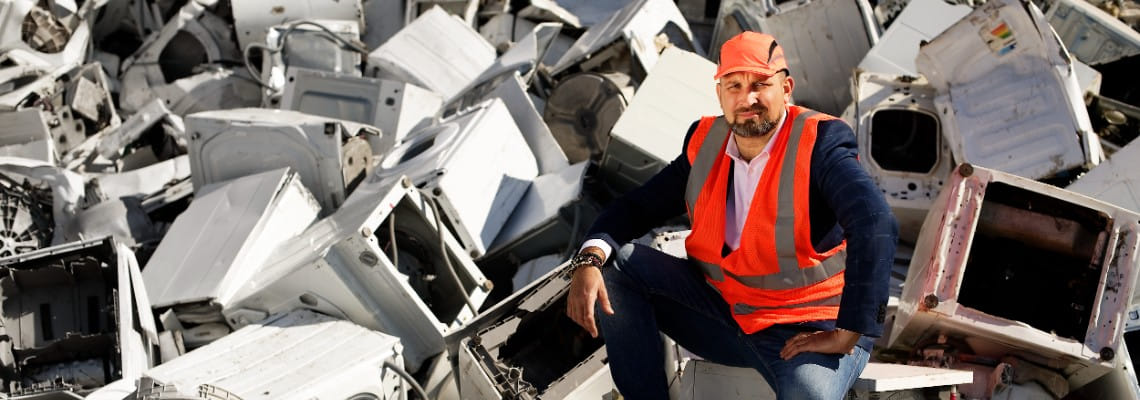WEEE stands for Waste Electrical and Electronic Equipment. This includes worn-out refrigerators, washing machines, telephones, fluorescent lamps, light bulbs, TV sets, irons, telephones, power drills and other components that are powered by electricity or batteries. Also often referred to as electro-waste. At Elektrorecykling S.A., we see it more as a material that, when properly processed, allows us to recover certain raw materials. However, it's worth remembering that electrical and electronic equipment that is no longer usable contains dangerous and poisonous compounds such as mercury, lead, chromium, cadmium and nickel. These components penetrate the soil very easily and contribute to environmental pollution. This can be very harmful to humans and animals. That's why it's so important to subject them to proper processing and recovery.
The most common method of processing electro-waste is mechanical treatment. However, before the worn-out equipment reaches the processing line, it must be adequately prepared:
The recovered raw material is:
All recovered materials are further processed - e.g. metals are sent to smelters, recyclable plastics are turned into re-granulate that can be reused in production.
The recovery of raw materials, but also the collection and treatment of WEEE itself is not just important, it is essential. If we want to preserve the world as we live in and as we know it, we must undertake this task as soon as possible. We are now accustomed to extracting raw material in a traditional way, directly from the depths of the earth. We must take into consideration that such action has its negative consequences:
It may not be long before there is not much left to extract from deep underground. In the case of many raw materials - especially metals - it turns out that there is already much more to recover than to extract. The recycling of electro-waste is important for several reasons. The recovery of raw materials and their reuse in the creation of new equipment not only reduces the use of natural resources, but also contributes to lower technological costs in the production process. For example: 90 percent of the materials from a used fluorescent lamp can be used to manufacture other devices. Recovery processes yield many valuable raw materials such as gold, copper, silver, platinum and palladium. Europeans alone have almost 8 billion household appliances in their homes, which together weigh around 67 million tonnes. In all, there are almost 4 million tonnes of copper and over 2 million tonnes of aluminium, which can easily be processed and used.
According to estimates from the Global E-Waste Monitor, the number of electro-waste has increased by 21 percent over the past five years. If we don't change our consumption pattern, this type of waste will increase to as much as 74.7 million tonnes by 2030, making it the most numerous fraction. This means that there are now many more raw materials to be recovered from WEEE than those available for mining.
Proper treatment and recovery from WEEE can provide the economy with:

